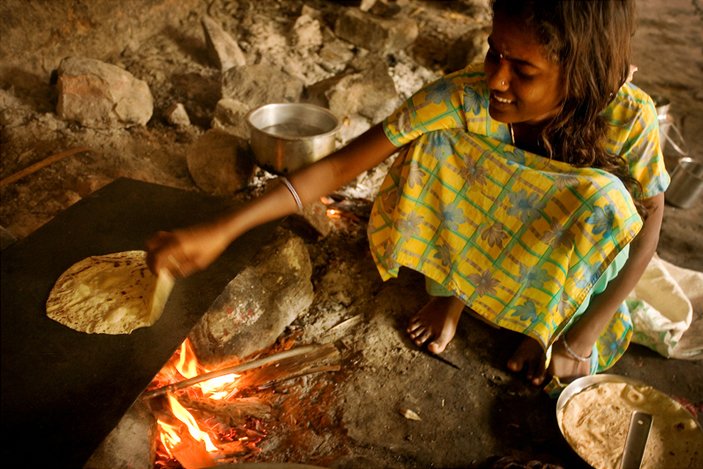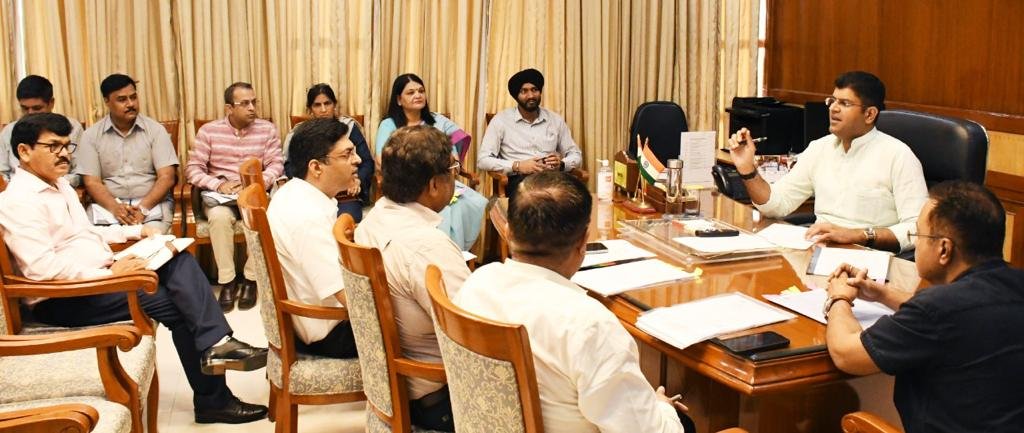
Haryana project shows fortification’s positive impact in India
In 2021, FFI and partners including the Chandigarh Postgraduate Institute for Medical Education and Research (PGIMER) and United States Centers for Disease Control and Prevention (CDC), followed up with women who had participated in a pilot fortification program in Haryana, India, to assess the impact of the program on their health. Since March of 2018, the women had received atta, a type of wholemeal wheat flour used to make traditional foods like roti, fortified with iron, folic acid, and vitamin B12 through the Public Distribution System (PDS).
Preliminary results indicate a positive impact on biomarker measures of micronutrient status with substantial increases in biomarker concentrations (red blood cell folate, serum folate, vitamin B12, hemoglobin, and ferritin) among women of reproductive age after the implementation of the atta fortification program in two blocks of Ambala District, Haryana.
Not only do these positive results suggest that the fortified atta is being consumed and that the added nutrients are at an optimum level, they demonstrate that targeted fortification of atta through an Indian social protection program like PDS has a radical health benefit for all, women and their future children in particular. Fortification of grains does not just promote individual health; it has a ripple effect that can reduce malnutrition for entire communities.
“Preliminary results indicate a positive impact on women’s health after the implementation of the atta fortification program.”
Haryana is a populous state (approximately 28 million) with one of the highest percentages of anemic children in India. Haryana also has some of the highest rates of anemia among women in India and a high prevalence of neural tube defects (NTDs)—40 per 10,000 births—despite a relatively strong per capita income. The state’s position in India’s food pipeline also makes it an ideal location for a fortification program: Haryana is the source of much of India’s food and is a main contributor of cereals and pulses.
The Haryana Demonstration Project was first conceived in 2014 when various stakeholders gathered to discuss strategies to initiate food fortification in India; however, the decision to address micronutrient deficiencies was not formalized until the 2015 Global Summit on Food Fortification in Arusha, Tanzania. Rather than starting from scratch, the Haryana Demonstration Project was designed to take advantage of existing governmental nutritional interventions, including PDS, a program that provides grains and other staple foods at a highly subsidized rate to those in need; ‘Pradhan Mantri Poshan Shakti Nirman’ (PM Poshan), a program that provides prepared meals for children at school; and the Integrated Child Development Scheme (ICDS), which distributes meals to children aged six months to five years and pregnant and lactating mothers. Providing fortified foods through these social protection programs ensures that people most vulnerable to micronutrient deficiencies—women, children, and those for whom a diverse, nutritious diet is not always economically feasible—have access to the nutrients they need.
As a result of FFI and partners’ efforts, 17,500 metric tons of fortified atta are distributed through PDS per month, reaching 3.3 million people in five districts of Haryana. Most PDS beneficiaries receive five kilograms of fortified atta a month; however, the lowest income beneficiaries receive 35 kilograms a month irrespective of the number of family members. All districts in Haryana receive fortified atta under PM Poshan and ICDS: 1.4 million people benefit from each program, respectively. ICDS distributes 2,000 metric tons of fortified flour and PM Poshan distributes 3,550 metric tons of fortified flour to beneficiaries per month.
Over the course of the program, FFI has worked with five main partners: the Government of Haryana, PGIMER, CDC, World Health Organization (WHO), and Indian nonprofit Survival for Women and Children Foundation (SWACH). FFI’s main role has been to analyze the atta supply chain and opportunity for fortification, conduct milling industry assessments, and provide technical support.

The Haryana Demonstration Project was conducted in three phases, with the goal of assessing the feasibility, sustainability, and health impact of fortifying atta using existing government systems.
The project began in 2017, when a baseline survey of consumption and micronutrient status was conducted in two blocks of Ambala District, Haryana State. Face-to-face interviews were conducted for demographic, household, health, and biomarker information using multistage cluster sampling. Before PDS recipients began receiving fortified atta, blood samples were collected for chemical analysis from nearly 900 non-pregnant, non-lactating women of reproductive age. It was determined that many women had red blood cell (RBC) folate insufficiency. RBC folate insufficiency in women can lead to their babies being born with life-altering and life-threatening NTDs. More than 96% of the women had insufficient levels of at least one micronutrient. This first phase also focused on advocacy. Teams met with beneficiaries to explain the benefits of fortified atta as well as its shelf life, which is shorter than the whole, unmilled grains they received through PDS before the project.
During phase two, which began in March 2018, the government started to distribute atta fortified with iron, folic acid, and vitamin B12 to PDS beneficiaries in the Ambala District project area. Samples of the fortified atta were evaluated, and it was determined that the levels of iron and folic acid very precisely approximated 2016 nutrition standards in India, which are in line with 2009 WHO recommendations. According to an assessment conducted by PGIMER, nearly all PDS beneficiaries of the project received and consumed fortified atta. In June 2018, distribution of fortified atta expanded to ICDS in those same two blocks of Ambala.
“These positive results suggest that the fortification of wheat flour through an Indian social protection program like PDS has a radical health benefit for all, women and their future children in particular.”
During phase three, which began in 2021, PGIMER and partners including CDC and FFI assessed the impact of atta fortification in Ambala. They found that there was a significant nutritional benefit to the women who had received and consumed fortified atta.
The project in Haryana is a clear demonstration that fortification reduces micronutrient deficiencies and promotes health. FFI and its partners hope to tailor the model developed in Haryana to other Indian states and transform millions more lives. When scaled up and integrated into state systems, fortification can continue to build a healthier future in India for years to come.



